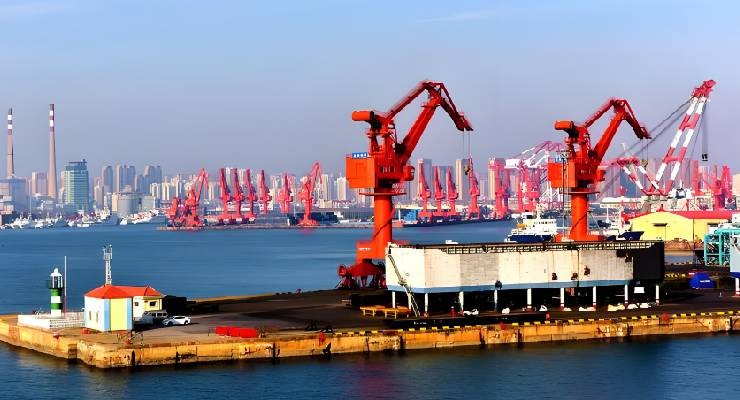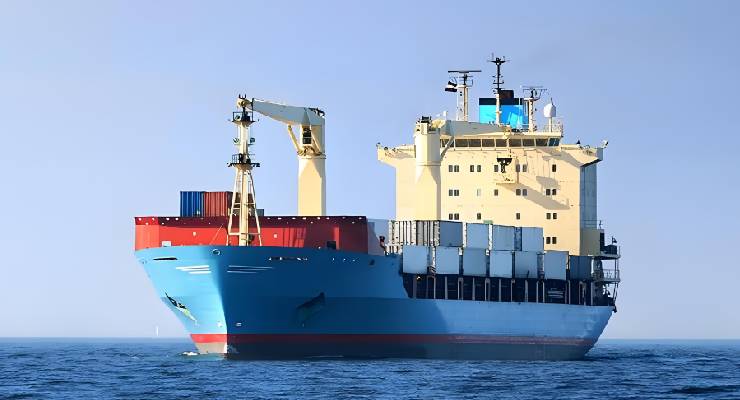
The trade relations between China and Kenya have significantly strengthened over the years, primarily driven by China’s growing investment in infrastructure development across Africa. Container shipping plays a crucial role in this trade route, effectively transporting large volumes of goods over considerable distances. As businesses expand their reach, understanding the intricacies of shipping costs becomes essential. Factors such as container size, shipping service type, and economic conditions can all influence the expenses associated with importing goods.
Factors Affecting Shipping Costs
Weight and Volume of Cargo
The weight and volume of your cargo are primary determinants of shipping costs. Heavy and bulky items typically incur higher fees due to the increased space they occupy on the vessel and the added handling required during loading and unloading. For example, a full 20ft container can hold up to 28,000 kilograms or around 33 cubic meters, while a 40ft container can accommodate approximately 30,480 kilograms or about 67 cubic meters. Accurate estimation of your cargo’s weight and volume ensures you select the appropriate container type, optimizing your shipping expenses.
Distance and Port Locations
The distance between shipping points and the specific port locations involved in the transit also influence shipping costs. The route from major Chinese ports, such as Shanghai or Shenzhen, to Kenya’s bustling port of Mombasa covers thousands of kilometers, requiring careful route planning to minimize transit times and costs. Additionally, proximity to loading and unloading ports can affect overall logistics costs, including land transportation.
Delivery Service Type
Choosing the right delivery service type can have a significant impact on your shipping expenses. Various options such as standard, express, or door-to-door services offer different cost structures and delivery timelines. While express services may expedite delivery, they often come at a premium price. Businesses should evaluate their urgency and budget when selecting a service type.
Shipping Seasons and Peak Periods
Shipping seasons and peak periods can greatly affect costs. During peak seasons, such as the lead-up to major holidays or events, shipping demand surges, leading to increased prices and potential delays. Conversely, shipping during off-peak seasons may present opportunities for cost savings. Importers should monitor seasonal trends to strategically plan their shipments and avoid inflated costs.
Comparison of Costs from Different Chinese Ports
The cost of shipping containers can also vary based on the port of origin. The following table provides a comparative overview of the average shipping costs for 20ft and 40ft containers from different major Chinese ports to Mombasa, Kenya:
Port of Origin | 20ft Container Cost (USD) | 40ft Container Cost (USD) |
Shanghai | $1,800 – $2,800 | $3,200 – $4,200 |
Shenzhen | $1,700 – $2,700 | $3,100 – $4,100 |
Ningbo | $1,600 – $2,600 | $3,000 – $4,000 |
Guangzhou | $1,650 – $2,650 | $3,050 – $4,050 |
Qingdao | $1,750 – $2,750 | $3,150 – $4,150 |
Port Charges
Port charges include fees imposed by port authorities for loading and unloading containers, as well as other associated services. These charges can vary depending on the port’s regulations and the specific services rendered, including terminal handling and storage fees. It’s essential to inquire about these costs early to avoid unexpected expenses upon delivery.
Customs Fees and Duties
Importing goods into Kenya will incur customs fees and duties. The Kenyan Revenue Authority (KRA) requires customs duties based on the value of the imported goods, as well as other applicable taxes such as VAT. Businesses should familiarize themselves with the country’s customs regulations to ensure compliance and budget appropriately for these costs.

Insurance
Insurance is a crucial consideration for businesses looking to protect their investments during transit. Shipping insurance covers potential damages or losses incurred during transport, providing peace of mind for businesses. The cost of insurance typically varies based on the value of the goods being shipped and the level of coverage selected.
Documentation Fees
In addition to shipping costs, businesses should be aware of documentation fees related to import paperwork, such as bills of lading, commercial invoices, and customs declarations. Ensuring that all necessary documentation is completed correctly can help avoid delays and additional costs.
Destination Charges in Kenya
Lastly, destination charges in Kenya include various fees associated with receiving goods at the port and preparing them for final delivery. These charges can encompass handling fees, port clearance fees, and any other local fees imposed by logistics providers upon the arrival of goods.
By carefully considering these additional costs and incorporating them into your logistics budget, businesses can better manage their overall shipping expenses and ensure smoother operations when importing goods from China to Kenya. Understanding the full scope of potential costs allows for more informed decision-making and ultimately contributes to improved supply chain efficiency.
These are some of the cases we've done about Kenya:
Ocean freight service STEEL PLATE from CHINA to KENYA
Ocean freight service CABLE from CHINA to KENYA
Ocean freight service SOLAR PANEL from CHINA to KENYA
Air Logistics Service from China to Kenya
Shipping Methods and Their Costs
When shipping goods from China to Kenya, businesses have several options available, each with its own set of costs and advantages. Understanding the differences between Full Container Load (FCL) and Less than Container Load (LCL) shipping methods is essential for making informed logistics decisions.
Full Container Load (FCL) Shipping
Full Container Load (FCL) shipping is a method where an entire shipping container is utilized by a single shipper for their cargo. This option is ideal for businesses with substantial shipping volumes, as it allows them to maximize container space and minimize costs per unit of cargo.
· Costs: The average cost for FCL shipping from China to Kenya typically ranges from $2,500 to $4,500 for a 40ft container and $1,500 to $3,000 for a 20ft container (as previously discussed). The cost-effectiveness of FCL shipping increases with larger volumes; therefore, businesses shipping substantial quantities of goods often find this method to be more economical.
· Advantages:
o Direct Shipping: FCL shipments usually go directly from the port of origin to the destination port, reducing transit time.
o Less Risk of Damage: Since the container is dedicated to one shipper, the risk of cargo damage or loss is minimized, as there is less handling and fewer transfers involved.
o Simplified Customs Clearance: Having a full container simplifies customs processes, as there’s a single shipment to manage.
Less than Container Load (LCL) Shipping
Less than Container Load (LCL) shipping is a method where multiple shippers share space within a single shipping container. This option is suitable for businesses with smaller shipments that do not require an entire container.
· Costs: The cost for LCL shipping from China to Kenya generally varies, often falling between $200 and $1,200, depending on the volume of cargo and weight. Unlike FCL, LCL costs are calculated based on the volume (cubic meters) or weight of the cargo, potentially leading to higher per-unit costs if shipping larger weights.
· Advantages:
o Cost-Effective for Smaller Shipments: LCL is an economical choice for businesses that do not have enough goods to fill a full container.
o Flexibility: This method allows businesses to ship smaller quantities more frequently, aiding in inventory management and reducing storage costs.
o Access to Global Markets: LCL shipping provides small businesses with the opportunity to access international markets without the financial burden of full container shipping.
In conclusion, the choice between FCL and LCL shipping depends on your specific business needs, shipment volume, and cost considerations. Understanding these options can help you select the most suitable shipping method for your imports from China to Kenya.
You may also be interested in : Guide To Ship from China to Kenya
Tips for Shipping from China to Kenya
Compare different modes of transport: When choosing a mode of transport, consider factors such as time, cost, and the nature of the goods. Ocean transport is usually the cheapest but takes the longest time; air transport is the fastest but the most expensive; land transport and combined transport may provide an intermediate option.
Choose a reliable transport company: Make sure to choose a transport company with a good reputation and experience to ensure that the goods can reach Kenya safely and on time.
Understand tariffs and taxes: Before shipping, understand Kenya’s import tariffs and taxes policy so that you can prepare for customs clearance of the goods.
Consider insurance: Purchasing shipping insurance for your goods can provide you with additional protection in case the goods are lost or damaged during transportation.
Shipping from China to Kenya, Winsail Logistics is more than a freight forwarding company. We provide personalized services to our valued clients. We believe in quality services at a very affordable price. If you compare the level of our services with our price you can declare us the cheapest company in the industry. Our staff is courteous, friendly and very professional. They know their job very well and provide you a tailor-made solution for your problems. At Winsail, we are with you every step of the way. You can count on us for delivery, reliability, and overall great experience.
-
 A Comprehensive Guide to Refrigerated ContainersJun 17,2025
A Comprehensive Guide to Refrigerated ContainersJun 17,2025 -
 Guide to 20ft & 40ft Shipping Container Dimensions for Global LogisticsJun 17,2025
Guide to 20ft & 40ft Shipping Container Dimensions for Global LogisticsJun 17,2025 -
 How to track shipments sent from ChinaMay 13,2025
How to track shipments sent from ChinaMay 13,2025 -
 Guide to Importing and Shipping Cars from China to UAEMay 13,2025
Guide to Importing and Shipping Cars from China to UAEMay 13,2025 -
 Guide to Importing and Shipping Camping Gear from ChinaMay 07,2025
Guide to Importing and Shipping Camping Gear from ChinaMay 07,2025 -
 Shipping from China to YemenMay 06,2025
Shipping from China to YemenMay 06,2025

